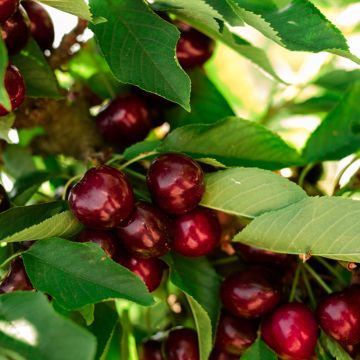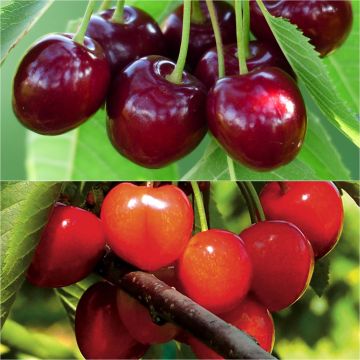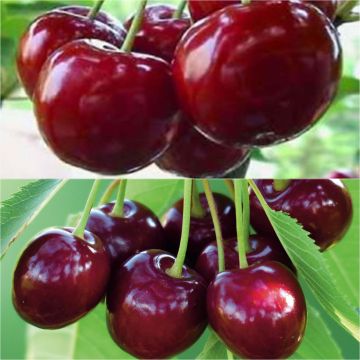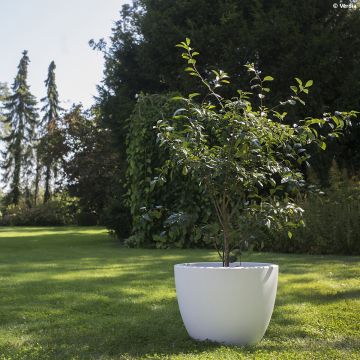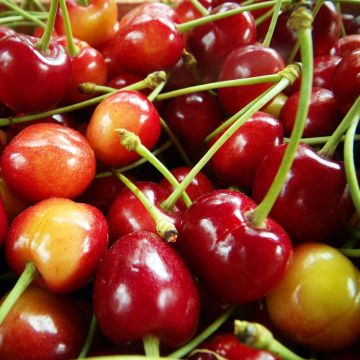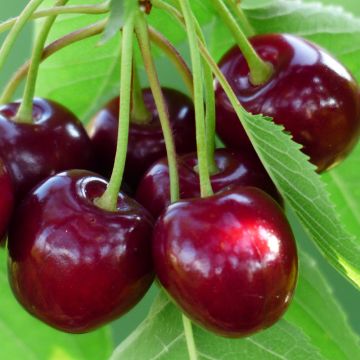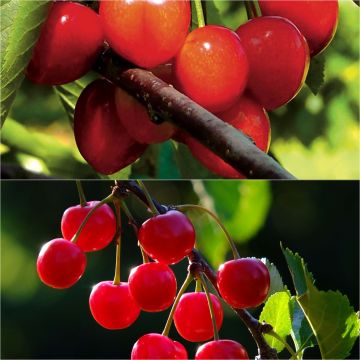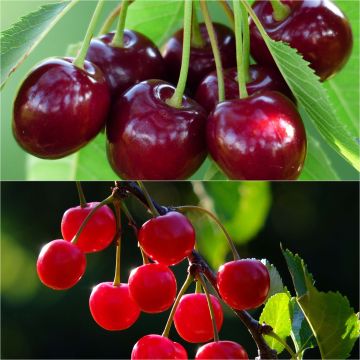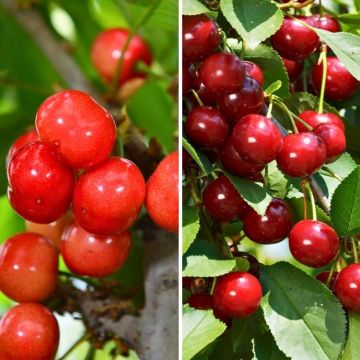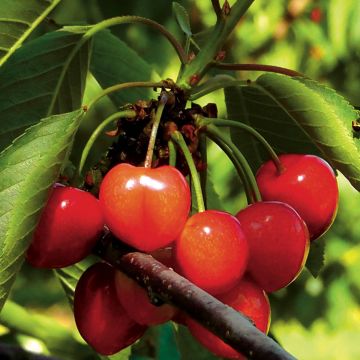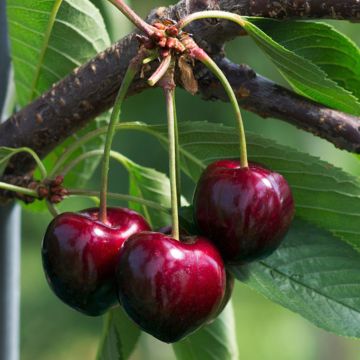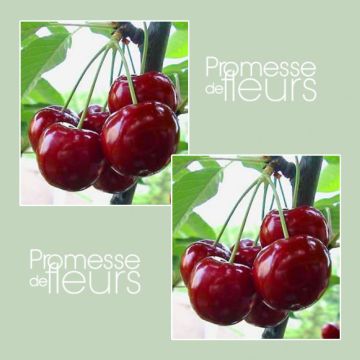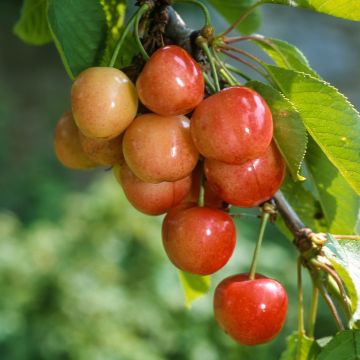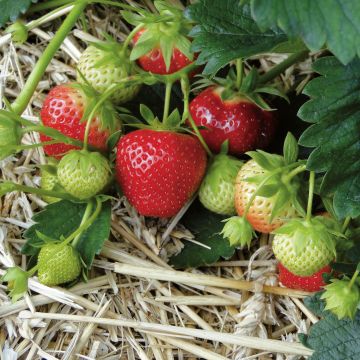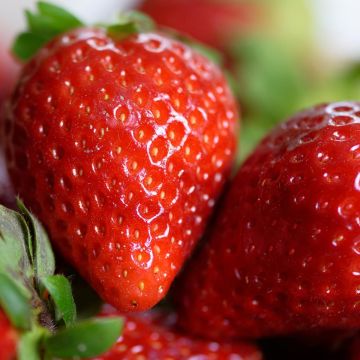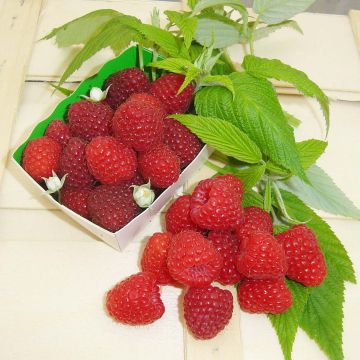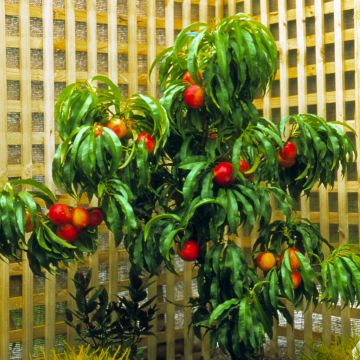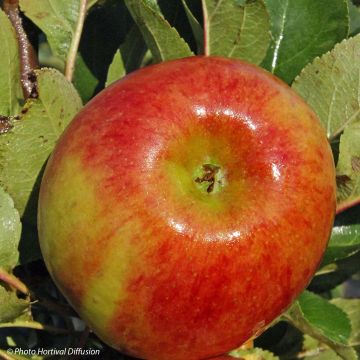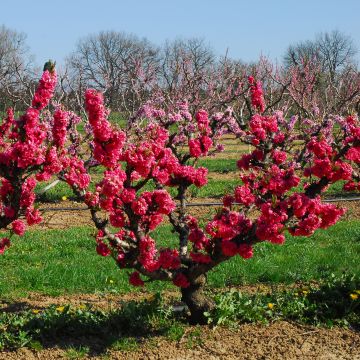

Dwarf Cherry Tree Cherry Boop


Dwarf Cherry Tree Cherry Boop
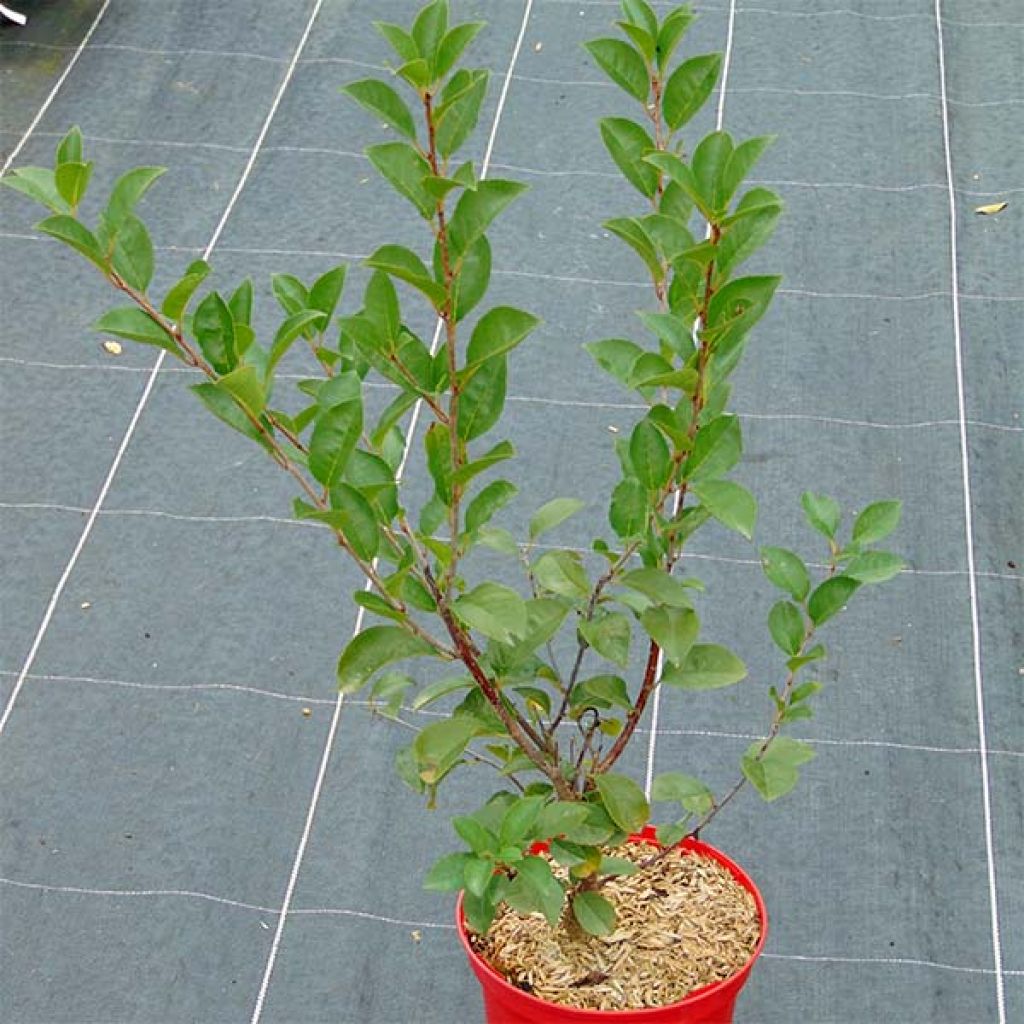

Dwarf Cherry Tree Cherry Boop
View more pictures
Hide images
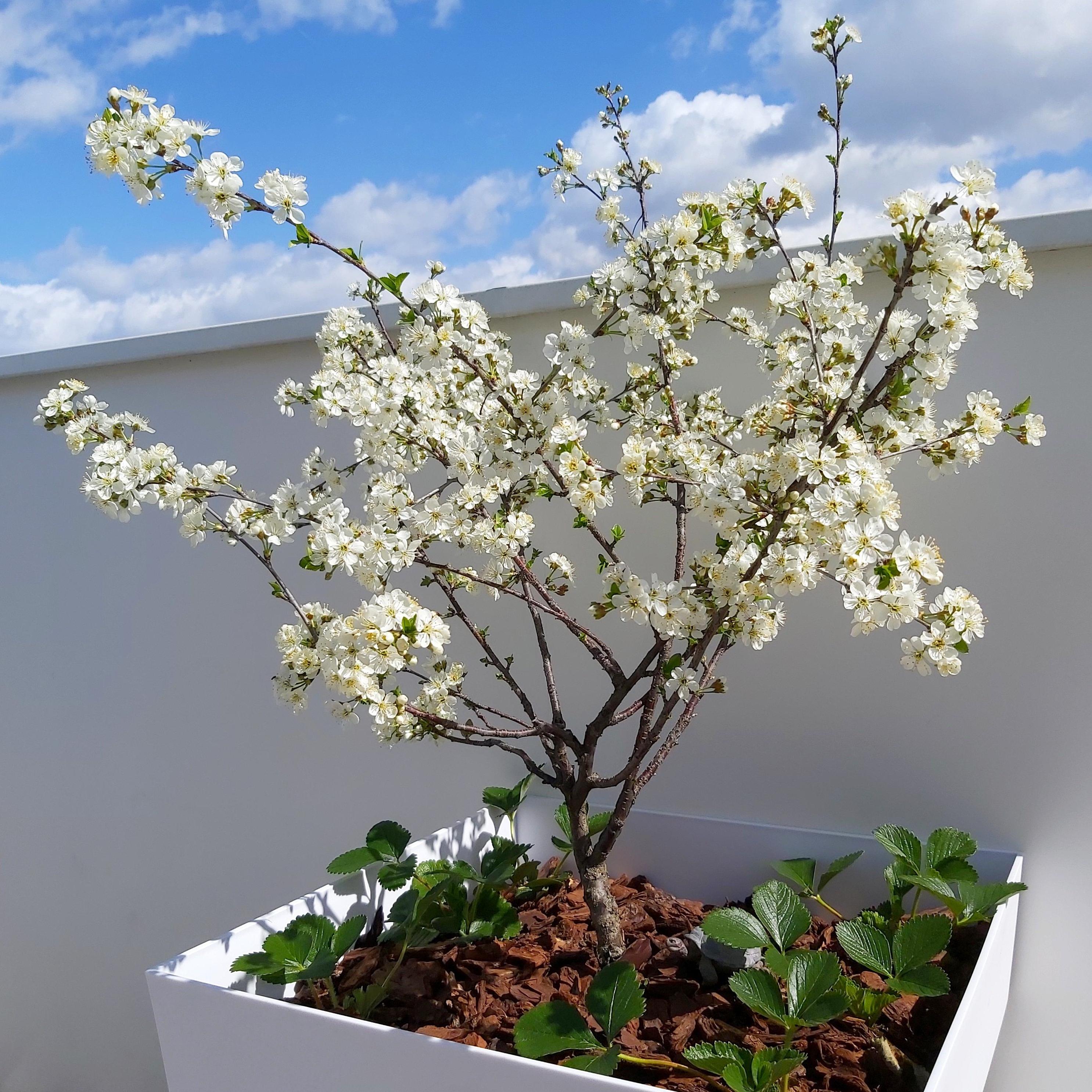
Duran S.

Purchased on 6th April 2020. For its third year in a pot, I repotted it at the end of winter, and it clearly appreciates it!
Duran S. • 69 FR
Dwarf Cherry Tree Cherry Boop
Prunus Cherry Boop®
Cherry
Cultivated since 2018, I'm going to resign myself to pulling it out... A shame, it's true that the tree is truly dwarf. But the branches, covered in many flowers in spring, have once again mostly ended up dried out, attacked by fire blight. And the few cherries that ripen are sour; less tasty than those from my morello cherry tree...
Alexandre, 16/06/2025
Special offer!
Receive a €20 voucher for any order over €90 (excluding delivery costs, credit notes, and plastic-free options)!
1- Add your favorite plants to your cart.
2- Once you have reached €90, confirm your order (you can even choose the delivery date!).
3- As soon as your order is shipped, you will receive an email containing your voucher code, valid for 3 months (90 days).
Your voucher is unique and can only be used once, for any order with a minimum value of €20, excluding delivery costs.
Can be combined with other current offers, non-divisible and non-refundable.
Why not try an alternative variety in stock?
View all →This plant carries a 6 months recovery warranty
More information
We guarantee the quality of our plants for a full growing cycle, and will replace at our expense any plant that fails to recover under normal climatic and planting conditions.
Description
The Cherry Boop Cherry Tree (Prunus x Cherry Boop) is an exceptional dwarf fruit tree that combines several qualities: small size, quick fruiting, excellent taste, and great hardiness.
Cherry Boop is a recent Canadian hybrid. Derived from the Mongolian Cherry (Prunus fruticosa, in the Rosaceae family), this variety has a compact habit and a very reasonable growth reaching only 2 metres (7 feet) in height. As a result, it is suitable for all gardens, from large to small, and can be grown as a fruit hedge or in pots on terraces. This small fruit tree is also known for its great hardiness, as it can withstand temperatures as low as -20 to -25 °C.
Self-fertile, Cherry Boop does not require another variety for pollination, so it can be planted alone. It begins to bear fruit very quickly, usually within one or two years.
In late April or early May, the Cherry Boop Cherry Tree is covered with small white flowers that appear before the leaves. This beautiful flowering, which is not very sensitive to late frosts, gives way to numerous fruits of excellent taste in July. After 4 to 5 years, this cherry tree produces, on average, about fifteen kilograms per year.
These cherries are very sweet, with small stones and weighing about 4 grams. When fully ripe, they can stay on the tree for up to two weeks before being harvested. You can enjoy them fresh after picking or use them for making pies, clafoutis, jams, and other preserves. Cherries are rich in vitamin C, minerals, and trace elements.
Note that the harvest may vary in abundance from year to year and may exhibit alternating cycles, allowing the bush to replenish its reserves.
Report an error about the product description
Dwarf Cherry Tree Cherry Boop in pictures
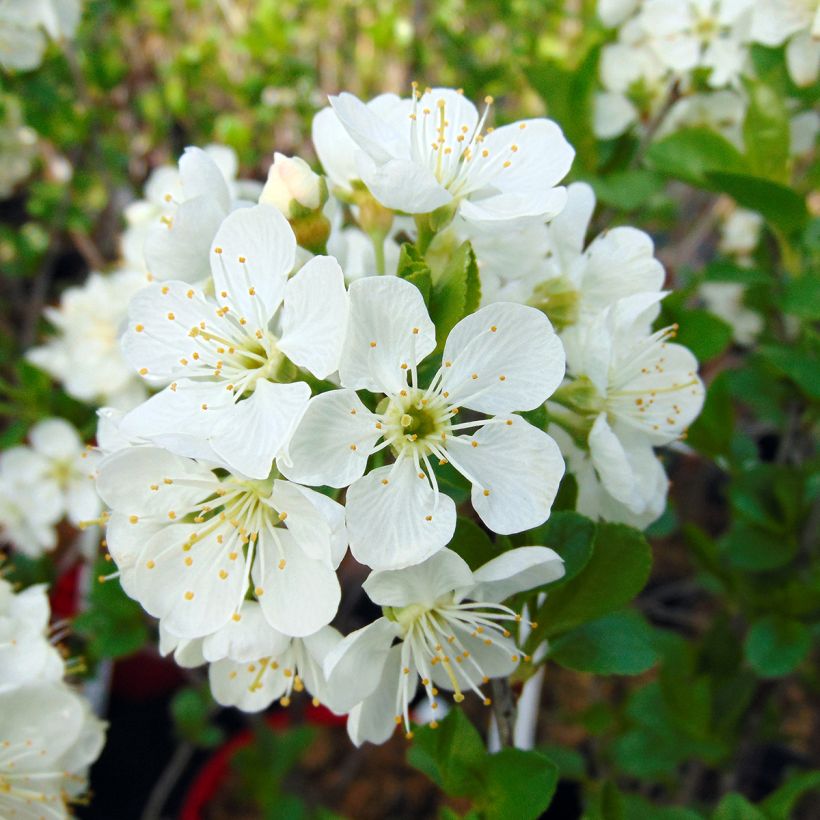

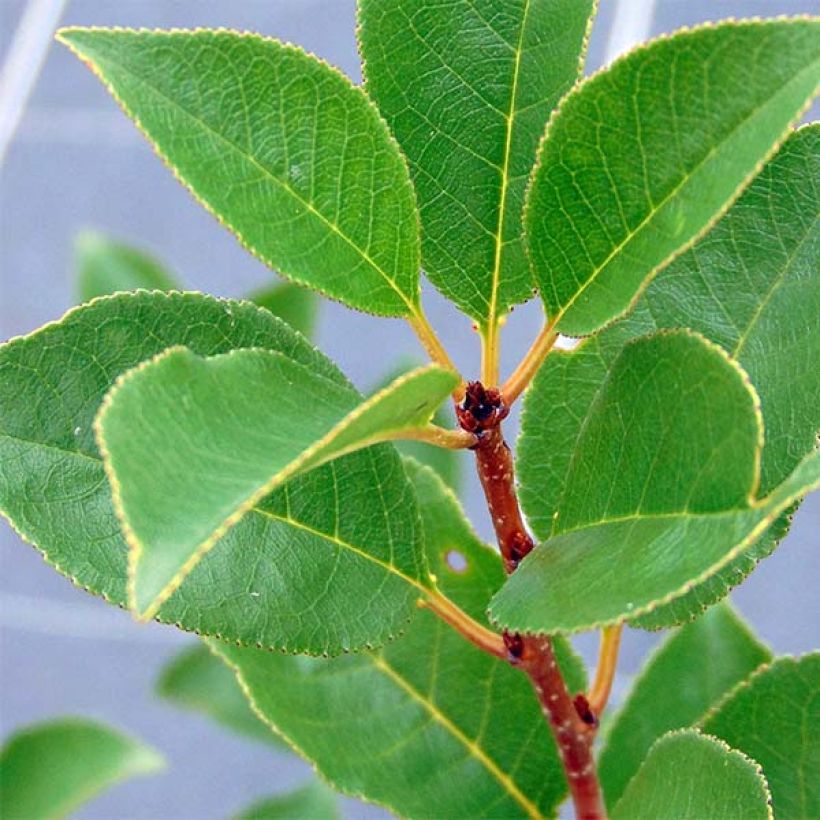

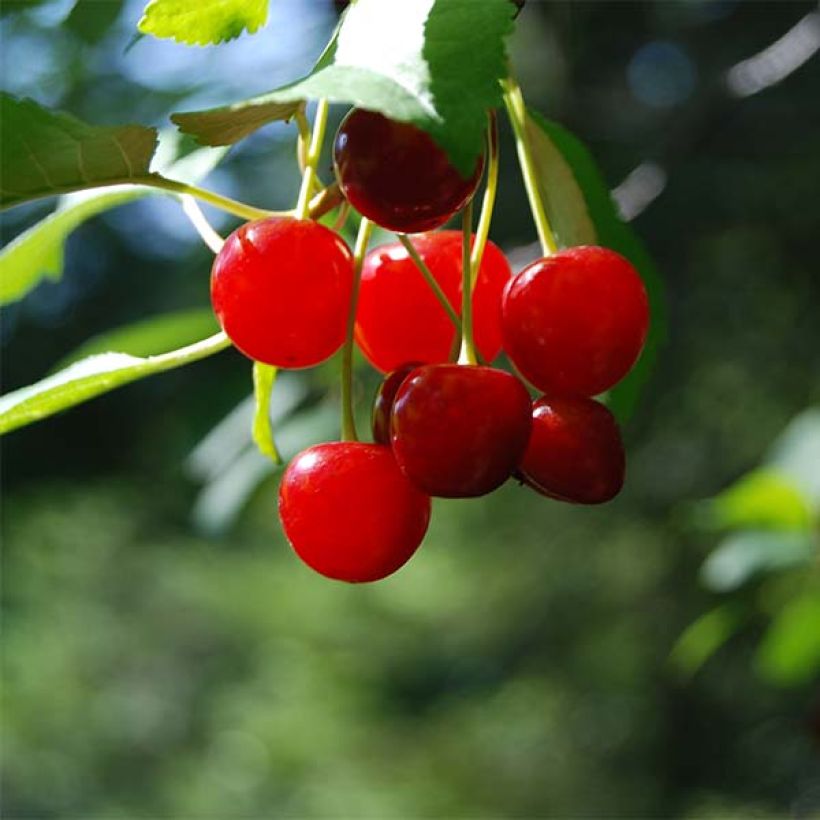

Plant habit
Fruit
Flowering
Foliage
Botanical data
Prunus
Cherry Boop®
Rosaceae
Cherry
Cultivar or hybrid
Other Cherry trees
View all →Planting and care
Easy to grow, the Cherry tree grows in all types of soil, acidic or chalky. It appreciates moist, light soils and fears heavy, clay soils. Choose a sunny exposure. In order to limit the risks of late frost on the flowers, it is recommended to plant the Cherry tree in a sheltered location, facing west and protected from cold winds in regions that experience spring frosts. Planting is preferably done in autumn. If you plant multiple trees, space them 1 metre (3 feet) apart for dwarf varieties.
Loosen the soil deeply, remove rocks and unwanted weeds. Add some sand to improve drainage. Dig a hole 4 to 5 times the volume of the root ball. Make sure to separate the subsoil from the topsoil. Mix bonemeal or well-rotted compost or potting soil with the subsoil and pour this mixture into the bottom of the planting hole. Install a stake. Place the root ball, cover with the topsoil and tamp down well. Water generously (about 10L). Tie the stake to the plant, crossing the tie in the shape of an 8, without touching the trunk.
During cultivation, watering is not necessary except in case of high heat. Mulch at the base to retain moisture in summer. Protect your harvest by installing, as desired, a bird net, aluminum foil or old CDs. In case of aphid attack, spray with soapy water.
For container planting: place a layer of gravel or clay pebbles at the bottom of the pot to facilitate drainage. Add a layer of soil and then place the plant and cover with a mixture of 2/3 garden soil, 1/3 potting soil or well-rotted compost. Every spring, remove the top layer and replace it with fresh potting soil. Water regularly and moderately. At the end of autumn, protect the pot with insulation before winter frosts.
Planting period
Intended location
Care
-
, onOrder confirmed
Reply from on Promesse de fleurs
Similar products
Haven't found what you were looking for?
Hardiness is the lowest winter temperature a plant can endure without suffering serious damage or even dying. However, hardiness is affected by location (a sheltered area, such as a patio), protection (winter cover) and soil type (hardiness is improved by well-drained soil).

Photo Sharing Terms & Conditions
In order to encourage gardeners to interact and share their experiences, Promesse de fleurs offers various media enabling content to be uploaded onto its Site - in particular via the ‘Photo sharing’ module.
The User agrees to refrain from:
- Posting any content that is illegal, prejudicial, insulting, racist, inciteful to hatred, revisionist, contrary to public decency, that infringes on privacy or on the privacy rights of third parties, in particular the publicity rights of persons and goods, intellectual property rights, or the right to privacy.
- Submitting content on behalf of a third party;
- Impersonate the identity of a third party and/or publish any personal information about a third party;
In general, the User undertakes to refrain from any unethical behaviour.
All Content (in particular text, comments, files, images, photos, videos, creative works, etc.), which may be subject to property or intellectual property rights, image or other private rights, shall remain the property of the User, subject to the limited rights granted by the terms of the licence granted by Promesse de fleurs as stated below. Users are at liberty to publish or not to publish such Content on the Site, notably via the ‘Photo Sharing’ facility, and accept that this Content shall be made public and freely accessible, notably on the Internet.
Users further acknowledge, undertake to have ,and guarantee that they hold all necessary rights and permissions to publish such material on the Site, in particular with regard to the legislation in force pertaining to any privacy, property, intellectual property, image, or contractual rights, or rights of any other nature. By publishing such Content on the Site, Users acknowledge accepting full liability as publishers of the Content within the meaning of the law, and grant Promesse de fleurs, free of charge, an inclusive, worldwide licence for the said Content for the entire duration of its publication, including all reproduction, representation, up/downloading, displaying, performing, transmission, and storage rights.
Users also grant permission for their name to be linked to the Content and accept that this link may not always be made available.
By engaging in posting material, Users consent to their Content becoming automatically accessible on the Internet, in particular on other sites and/or blogs and/or web pages of the Promesse de fleurs site, including in particular social pages and the Promesse de fleurs catalogue.
Users may secure the removal of entrusted content free of charge by issuing a simple request via our contact form.
The flowering period indicated on our website applies to countries and regions located in USDA zone 8 (France, the United Kingdom, Ireland, the Netherlands, etc.)
It will vary according to where you live:
- In zones 9 to 10 (Italy, Spain, Greece, etc.), flowering will occur about 2 to 4 weeks earlier.
- In zones 6 to 7 (Germany, Poland, Slovenia, and lower mountainous regions), flowering will be delayed by 2 to 3 weeks.
- In zone 5 (Central Europe, Scandinavia), blooming will be delayed by 3 to 5 weeks.
In temperate climates, pruning of spring-flowering shrubs (forsythia, spireas, etc.) should be done just after flowering.
Pruning of summer-flowering shrubs (Indian Lilac, Perovskia, etc.) can be done in winter or spring.
In cold regions as well as with frost-sensitive plants, avoid pruning too early when severe frosts may still occur.
The planting period indicated on our website applies to countries and regions located in USDA zone 8 (France, United Kingdom, Ireland, Netherlands).
It will vary according to where you live:
- In Mediterranean zones (Marseille, Madrid, Milan, etc.), autumn and winter are the best planting periods.
- In continental zones (Strasbourg, Munich, Vienna, etc.), delay planting by 2 to 3 weeks in spring and bring it forward by 2 to 4 weeks in autumn.
- In mountainous regions (the Alps, Pyrenees, Carpathians, etc.), it is best to plant in late spring (May-June) or late summer (August-September).
The harvesting period indicated on our website applies to countries and regions in USDA zone 8 (France, England, Ireland, the Netherlands).
In colder areas (Scandinavia, Poland, Austria...) fruit and vegetable harvests are likely to be delayed by 3-4 weeks.
In warmer areas (Italy, Spain, Greece, etc.), harvesting will probably take place earlier, depending on weather conditions.
The sowing periods indicated on our website apply to countries and regions within USDA Zone 8 (France, UK, Ireland, Netherlands).
In colder areas (Scandinavia, Poland, Austria...), delay any outdoor sowing by 3-4 weeks, or sow under glass.
In warmer climes (Italy, Spain, Greece, etc.), bring outdoor sowing forward by a few weeks.






























